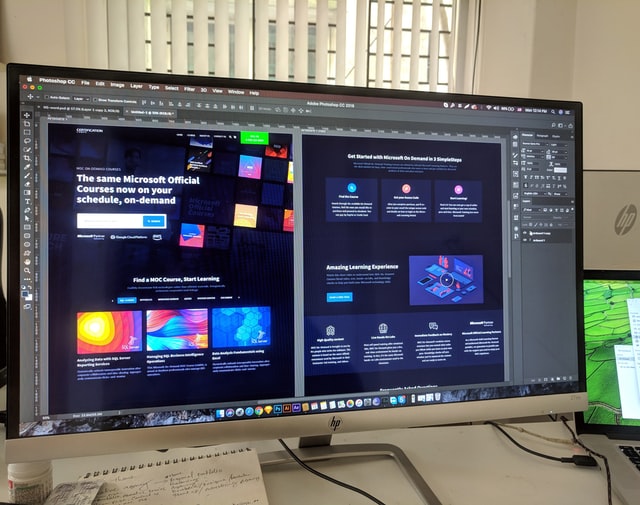
Colour is a powerful tool in website design. It has the power to attract attention, convey meaning, arouse desire, boost conversions, and even gain customer loyalty.
Colour choices require careful attention and, when done effectively, can influence how a visitor interprets the layout and material they view. To help you learn how to use colour successfully in your business and achieve better results, we’ve broken down some of the foundations of colour in website design.
What Is the Significance of Colour in Website Design?
The right colours for your website’s design are essential to its success. Colours can be your most powerful tool for getting your target audience to respond. Colours can elicit emotions or urge users to take action on your website.
Colour improves brand awareness and encourages users to take action on your site by helping people digest and store images more quickly than colourless (black and white) visuals. Because colour schemes can affect subconscious judgement, your palette should not contradict your brand’s vision.
A Colour’s Anatomy
Learning the fundamentals of colour theory is a wonderful place to start. It’s a little intimidating and complicated at first, but it’ll help you understand the fundamentals of colour relationships. You must first understand the rules to be great at anything, so here is a quick rundown.
How to Choose Colour Combinations
The colour wheel and the principles of analogous, complementary, monochromatic, and triad colour harmonies are the easiest ways to choose colour combinations or palettes.
Colour Models
Colours are described using colour models. Because there are so many colours and remembering their names is impossible, colour models or standards were developed to help us describe them.
CMYK Colour Model
The CMYK model is used for print production to characterise colours by their percentage of Cyan, Magenta, Yellow, and Black. CMYK is a colour model that is “subtractive.”
The RGB Scheme
The RGB model works with screen-based designs. A value between 0 and 255 is assigned to each light colour, Red, Green, and Blue.
Model of the LAB
The colour model in the lab is a little more complicated. It’s made up of three parts: a lightness component (L) that ranges from 0 to 100, an “a” component that comes from the Adobe Colour Picker’s green-red axis, and a “b” component that comes from the Adobe Colour Picker’s blue-yellow axis.
How to Select a Colour Scheme for Your Website
It’s one thing to comprehend colour theory. Another is selecting a successful colour palette. Begin with what you already know or work with a web design agency.
Starting with colours that are on brand and then introducing additional colours is a good strategy if you have an established business.
- Your Target Market: The colours you choose must also reflect the emotions you want your brand to convey. Know your target demographics and what makes them tick.
- Colour Trends: Colour trends provide valuable insight into what’s coming down the pike, allowing you to develop a fresh and modern website.
- Emotional: Think about the emotional reaction you want people to have or the tale you’re conveying.
Consider the colour harmonies; often, you’ll start with the dominating hue when choosing a colour palette. Then begin layering your palette. Darker colours are viewed first and have more visual impact, so start with those and work your way back to lighter hues.
Where Can You Get Colour Inspiration?
Inspiration can be found outdoors by researching various design fields, understanding your clients and competitive market, and remaining updated on predicted colour and web/branding trends.
- Pantone: When it comes to colour, Pantone is the industry leader. Pantone provides the most up-to-date colour trends in graphic arts, fashion, interiors, paint, and plastics. Pantone is a physical colour index ideal for any designer or business creating printed items. Physical colour swatches allow you to see precisely how your colour will appear on paper or fabric, saving you time and frustration.
- Pinterest: Colour palettes made by designers and creatives worldwide may be found on Pinterest. For fast colour inspiration, search by colour, season, or subject.
Improve Your Web Design Today
Working with colour can be difficult because there are many things to consider when developing a website. Having a stable colour palette to work with, on the other hand, is a terrific beginning step. The value of colour in web design is obvious: when utilised creatively while considering the demands of the target audience and the site content, it may significantly improve the user experience and, as a result, the conversion rate. Lastly, it may be best to seek web design services to help you out.
Look no further than our experience here at Frank Digital Agency if you’re seeking the top SEO firm in Adelaide. We’re here to help you get your website to the top of Google’s search results page. To learn more about website design, schedule a no-obligation consultation now!


